Embroidery, by definition, is decorative stitching done by hand or machine. If you enjoy drawing, doodling, or even tracing and coloring, why not pick up a needle and give this sewing art a try?
Hand embroidery was one of the first things I learned in the sewing crafts. I was in elementary school. My mom taught me. I loved it. I remember one summer bringing my embroidery hoop to the beach to work on a butterfly design. I know this makes me seem like not a beach person, but I am—I just had two loves at the time, and that day, embroidery trumped beach activities.
Years later, I was incredibly fortunate to work for an eveningwear designer who created all his custom embroideries. It was an unforgettable experience, including a visit to a factory outside of Shanghai, where I saw the embroidery machines working, stitching these beautifully intricate, sequined embroideries destined for parties and red carpets.
In this letter, I share the basics of hand embroidery as I know them with a special focus on the backstitch. (Future letters will spotlight other hand stitches, though not necessarily in successive order.)
Embroidery 101
Recommended Tools
An embroidery needle has a larger eye for thicker threads or floss, compared to regular needles, which usually have smaller eyes.
Embroidery floss comes in 6-strand twists. You can use as is or separate the strands. If you're following a pattern, it may specify the number of strands to use for the design. I often work with 3-strand twists.
Some embroidery is done freehand, similar to regular sewing, but many stitches are easier to work when the fabric is stretched taut in an embroidery hoop. Hoops come in various sizes; an 8-inch(ish) round double ring with a thumbscrew for tightening works well. A good hoop should hold the fabric securely in place.
Tip: It’s always a good idea to release your work from the hoop during long breaks or storage to avoid marking or stretching the fabric.
You’ll also need something to mark the fabric. Marking pens have water soluble ink, which can be removed with water or a damp cloth. There’s also embroidery tracing paper, which can be removed with a pencil eraser or with a damp cloth.
Other Useful Things
Floss bobbins come in cardboard and plastic. They are helpful for keeping embroidery floss organized and free from tangles.
A fishing tackle box is a great alternative to an art bin for storing floss bobbins, and it’s often a more budget-friendly choice as well.
Lastly, I like to leave small snips of embroidery thread in my embroidery needles to easily distinguish them from other needles in my pincushion.
The Backstitch
The backstitch is made up of short stitches placed end to end for a slim outline. This stitch may be used alone for stems or borders, or to outline solid areas. The stitches meet in a row, but the thread is carried under the fabric for twice the distance.
Before you begin, separate the floss if desired.
To sew a backstitch, start by tying a knot at the end of your thread. Bring the needle up from the underside of the fabric along the marked outline, or work freehand if you prefer. Stitch backward to fill the first gap, then bring the needle up again a short distance ahead, leaving a consistent space. Working from right to left, continue along the outline.
Ending Off
When you’ve finished your design or run out of thread, it’s time to end off. On the back of the fabric, slide your needle under three or four consecutive stitches and pull it through. Then snip off the excess thread.
Here’s a small gift I made for a cat-loving gamer. :) Using two stitch techniques—the backstitch and needle-turn appliqué—I added little details to a button-up.
And some inspiration! How wonderful is this silk and metallic embroidered Katazome-printed silk dressing gown from the 1880s?
As I wrap up this year, I’m looking ahead with excitement to what 2025 has in store. There will be deconstructing a vintage designer evening jacket and reconstructing Harris Tweed tailoring. There will embroidery stitch samplers and reupholstery projects, and lots, lots more. Let’s see where inspiration takes us!
Wishing you a Happy New Year! May 2025 bring health, happiness, and beauty into your life. Thank you again for being part of this newsletter.
With love and gratitude, Jane


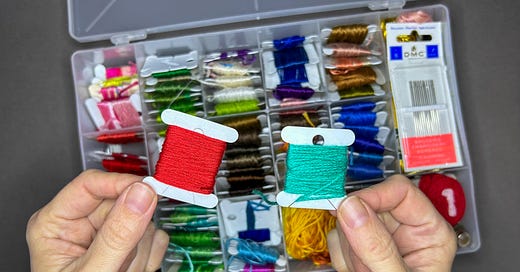


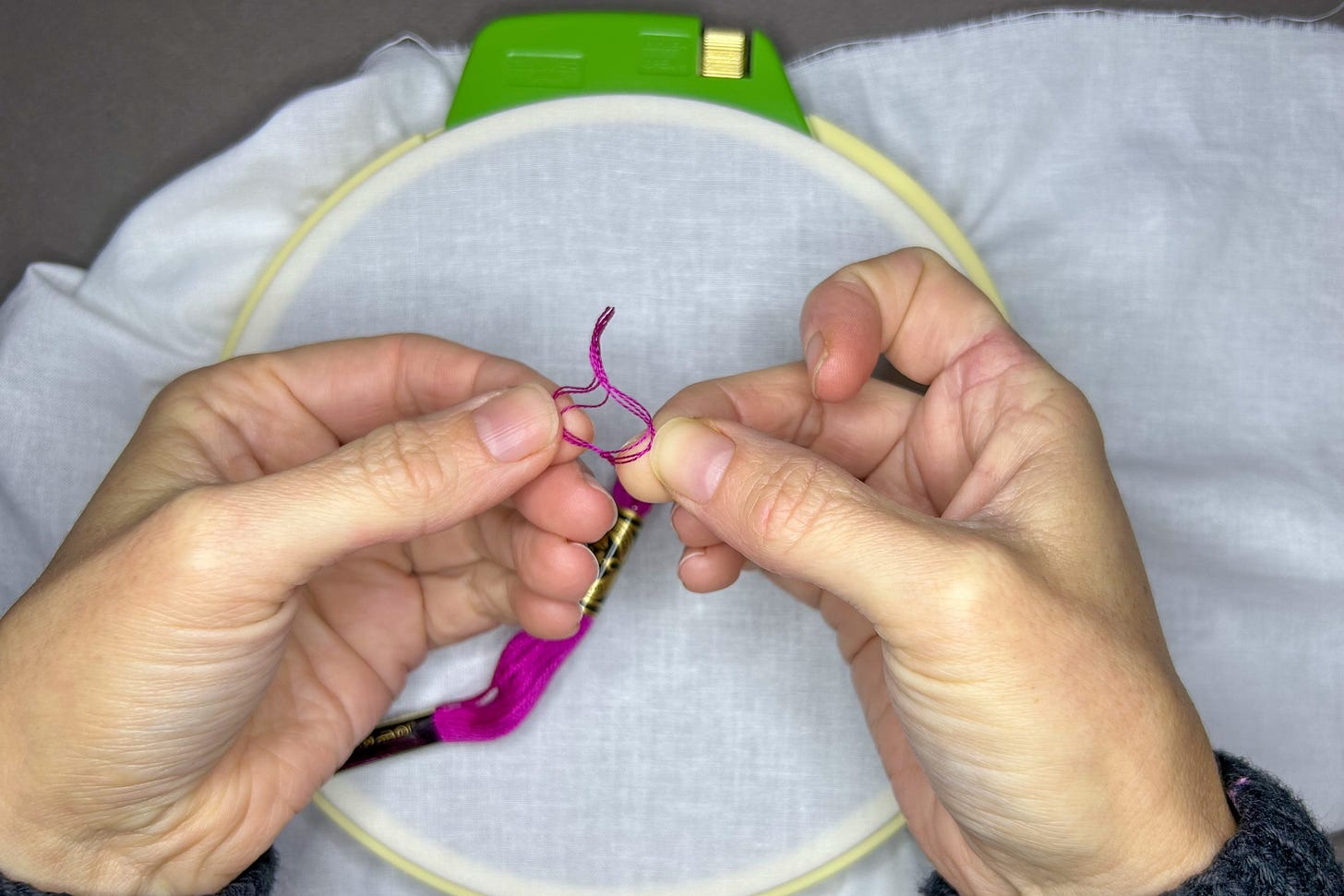

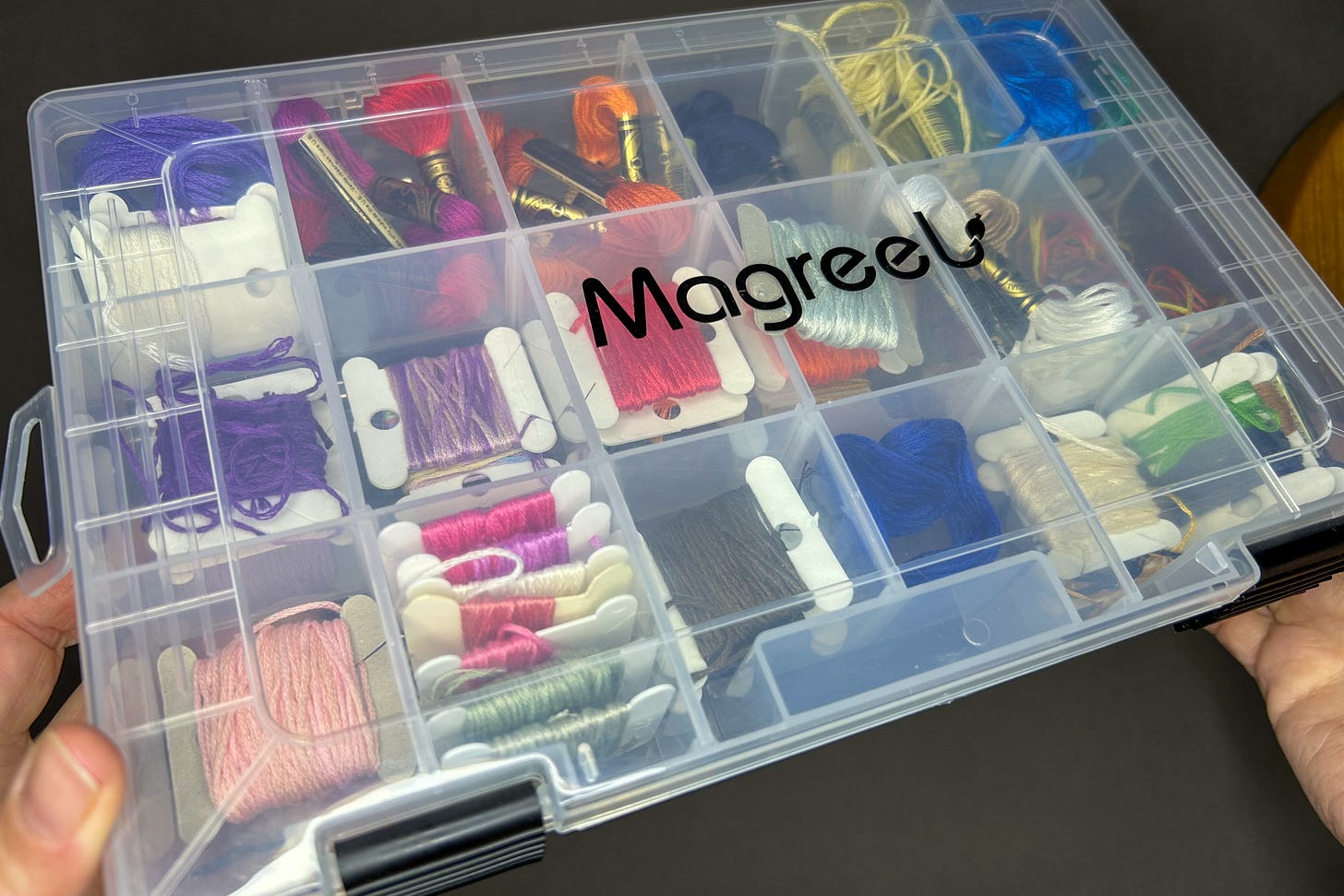
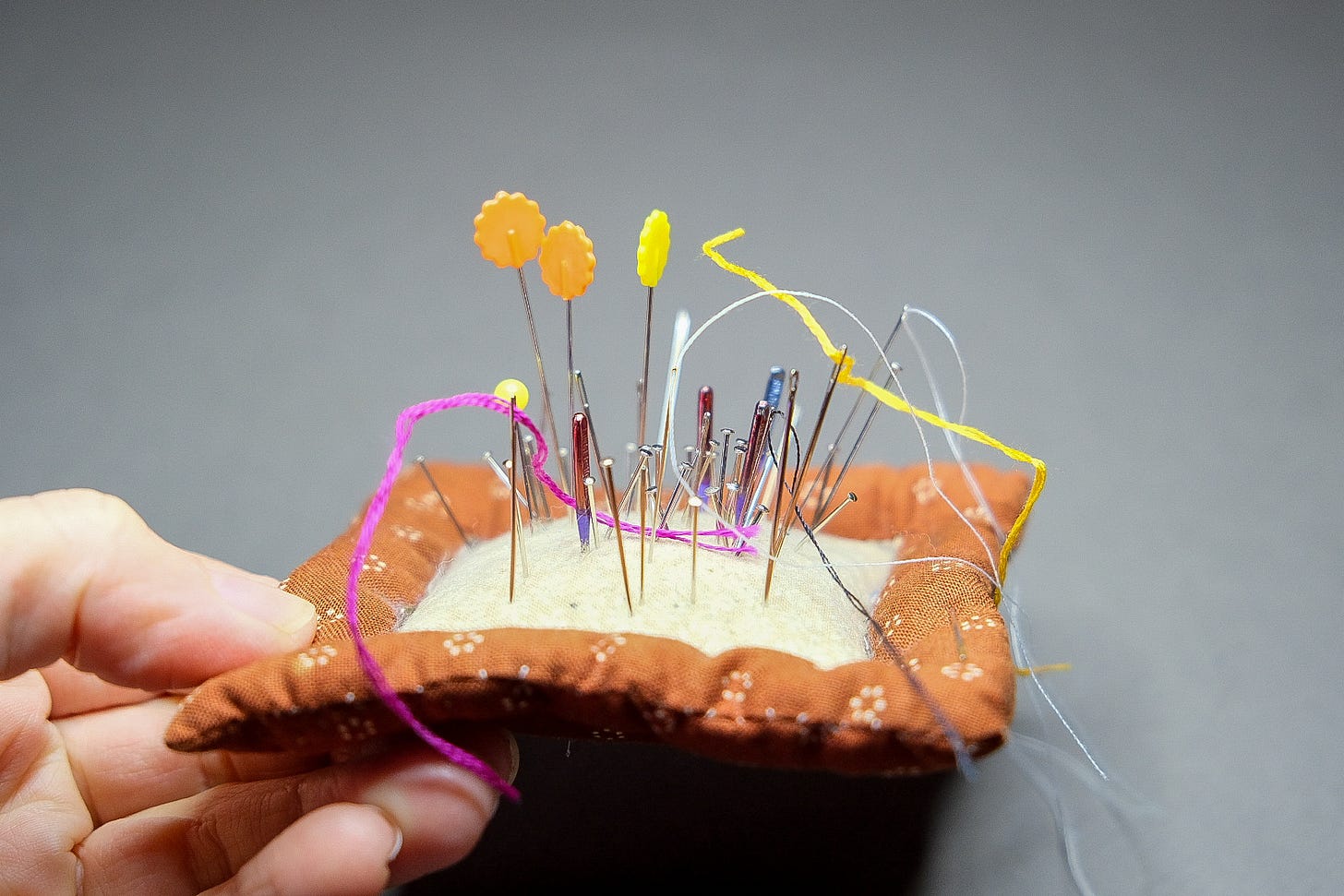
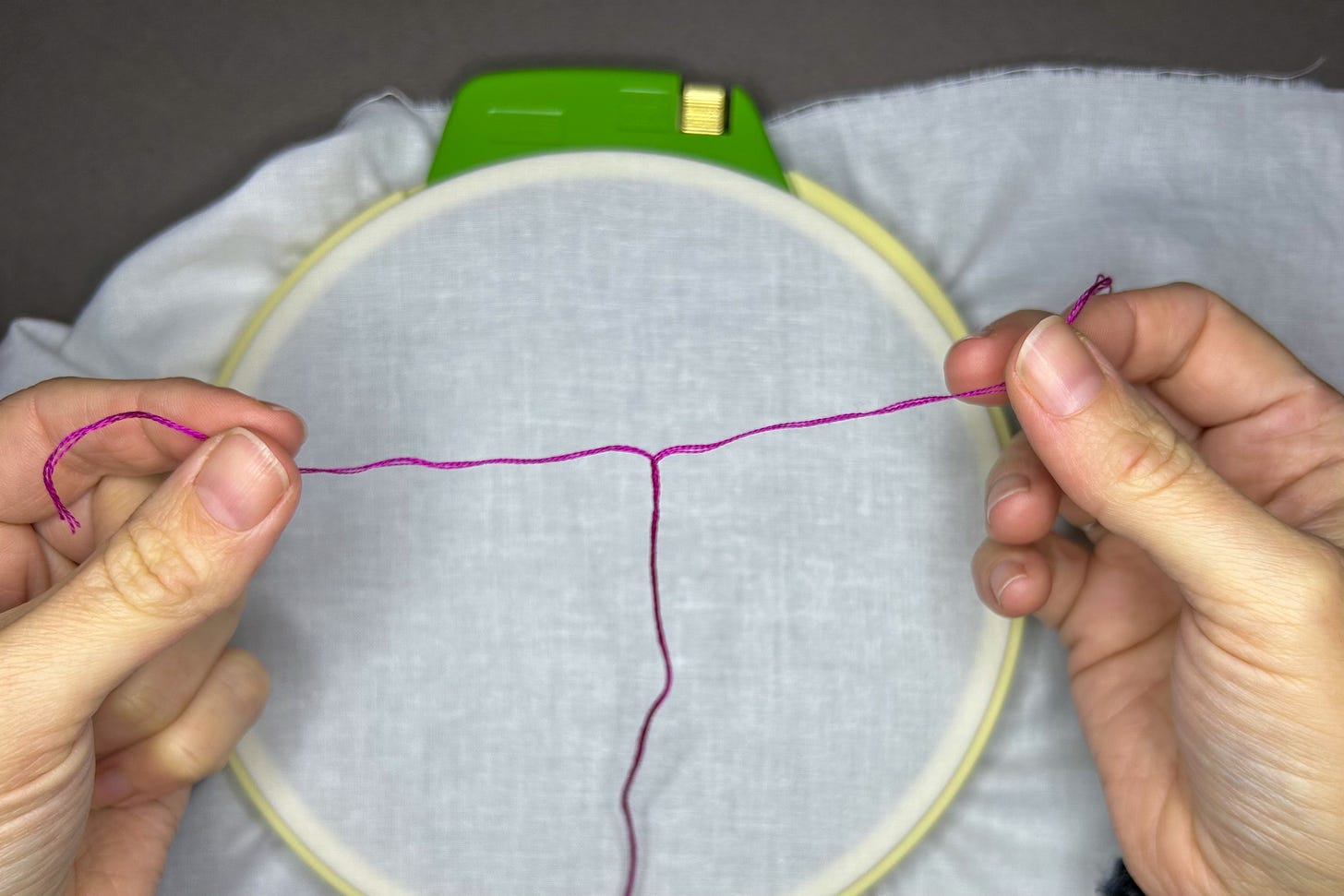

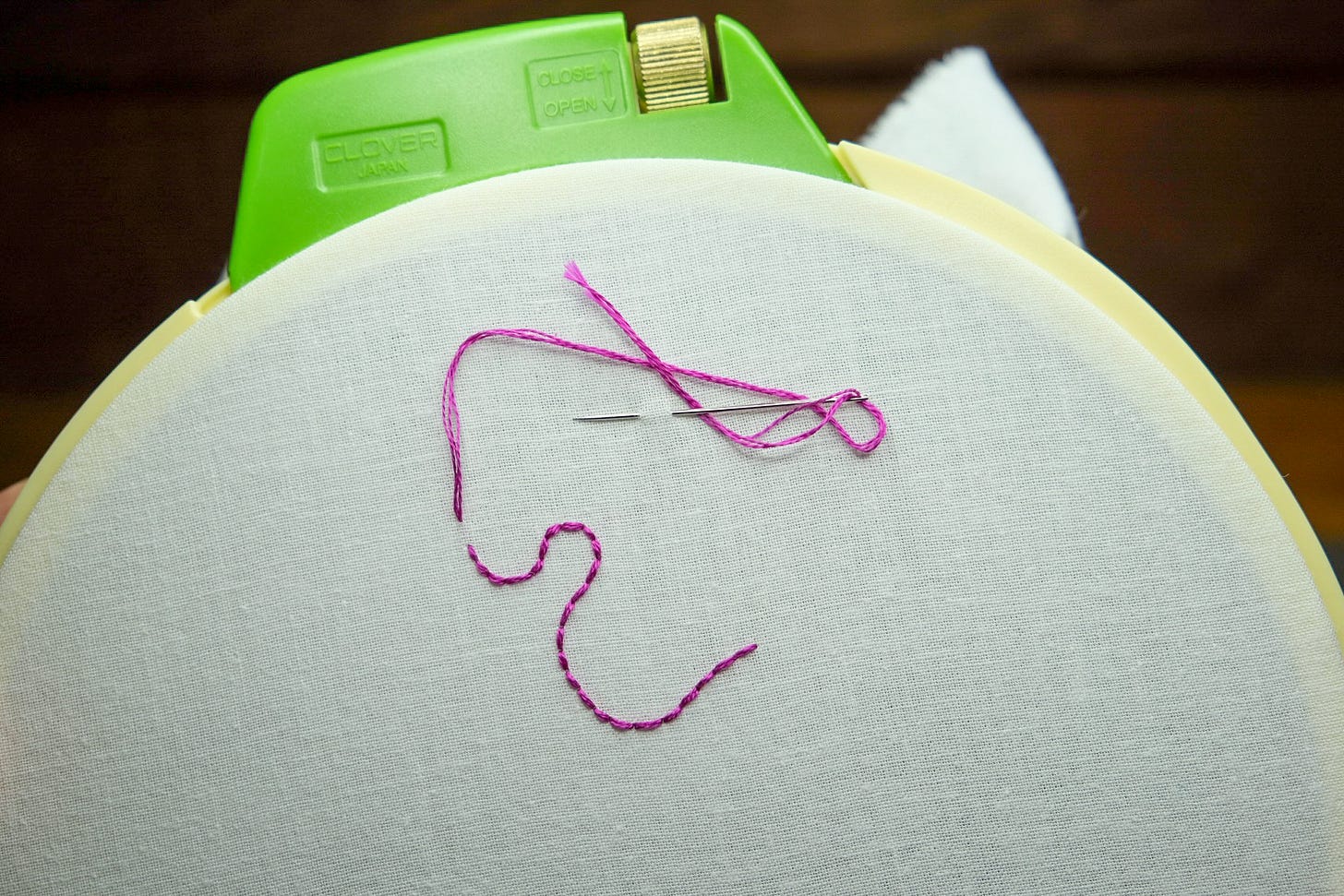
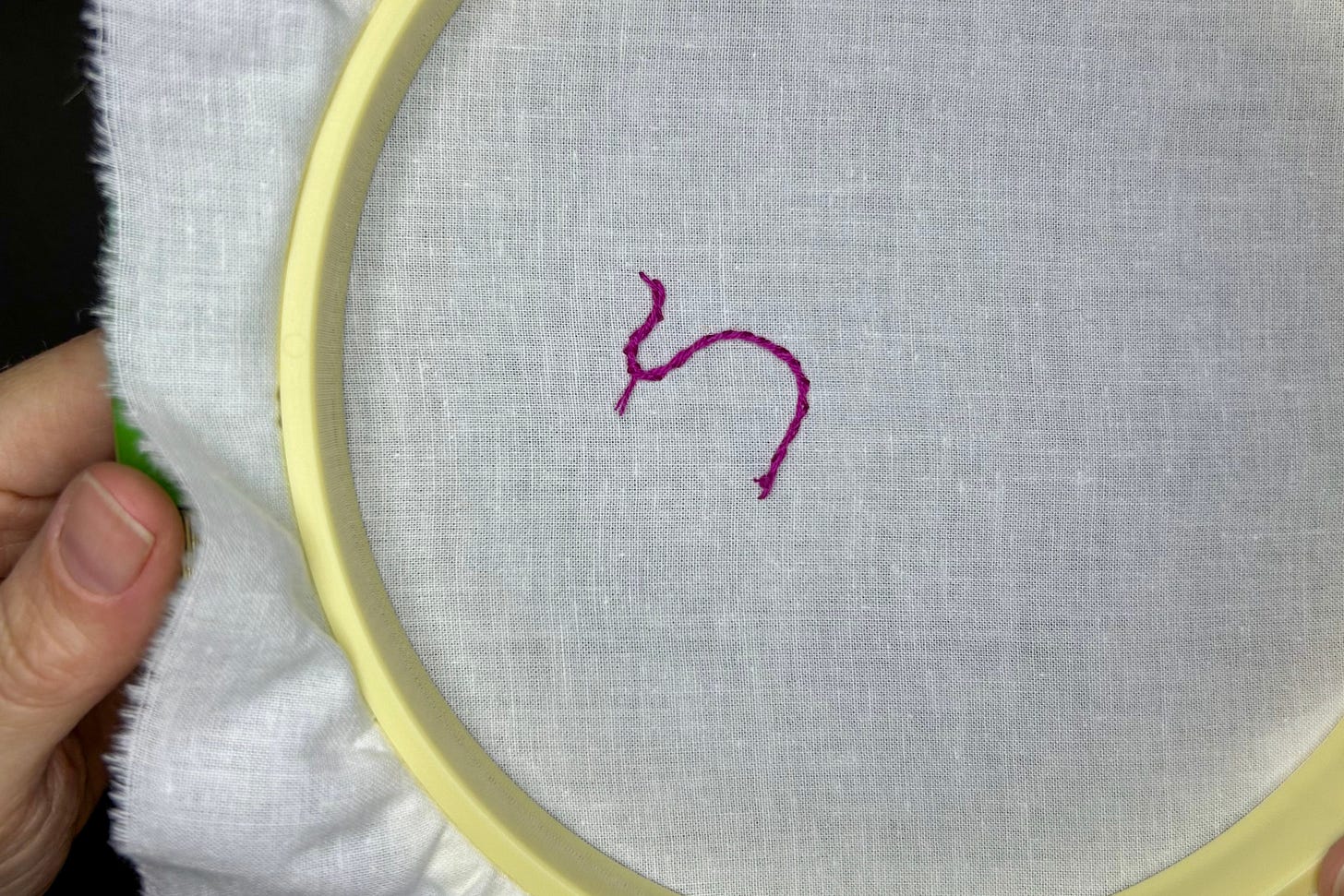
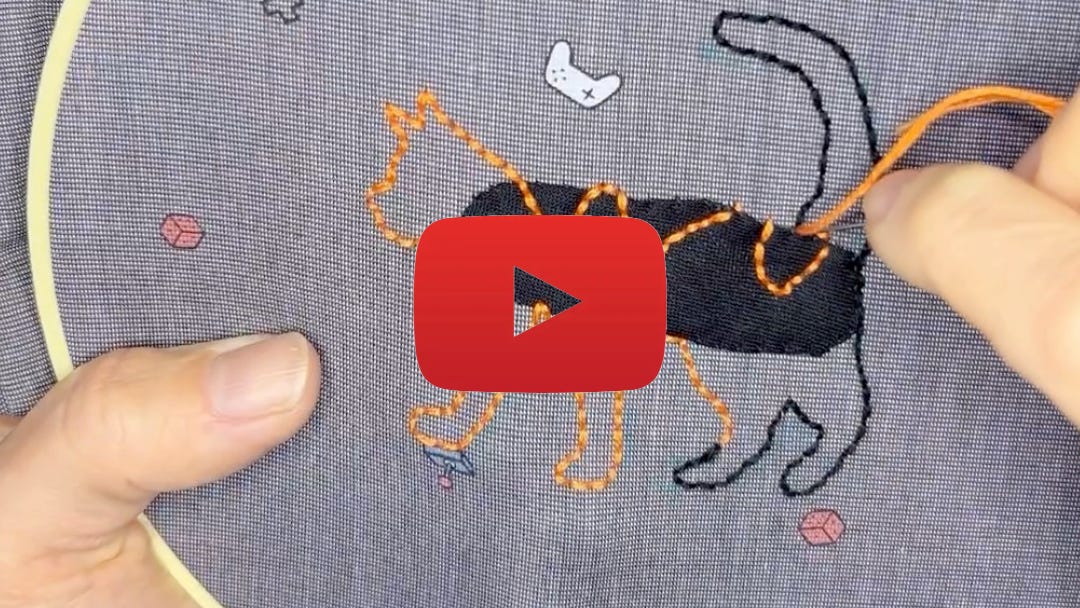
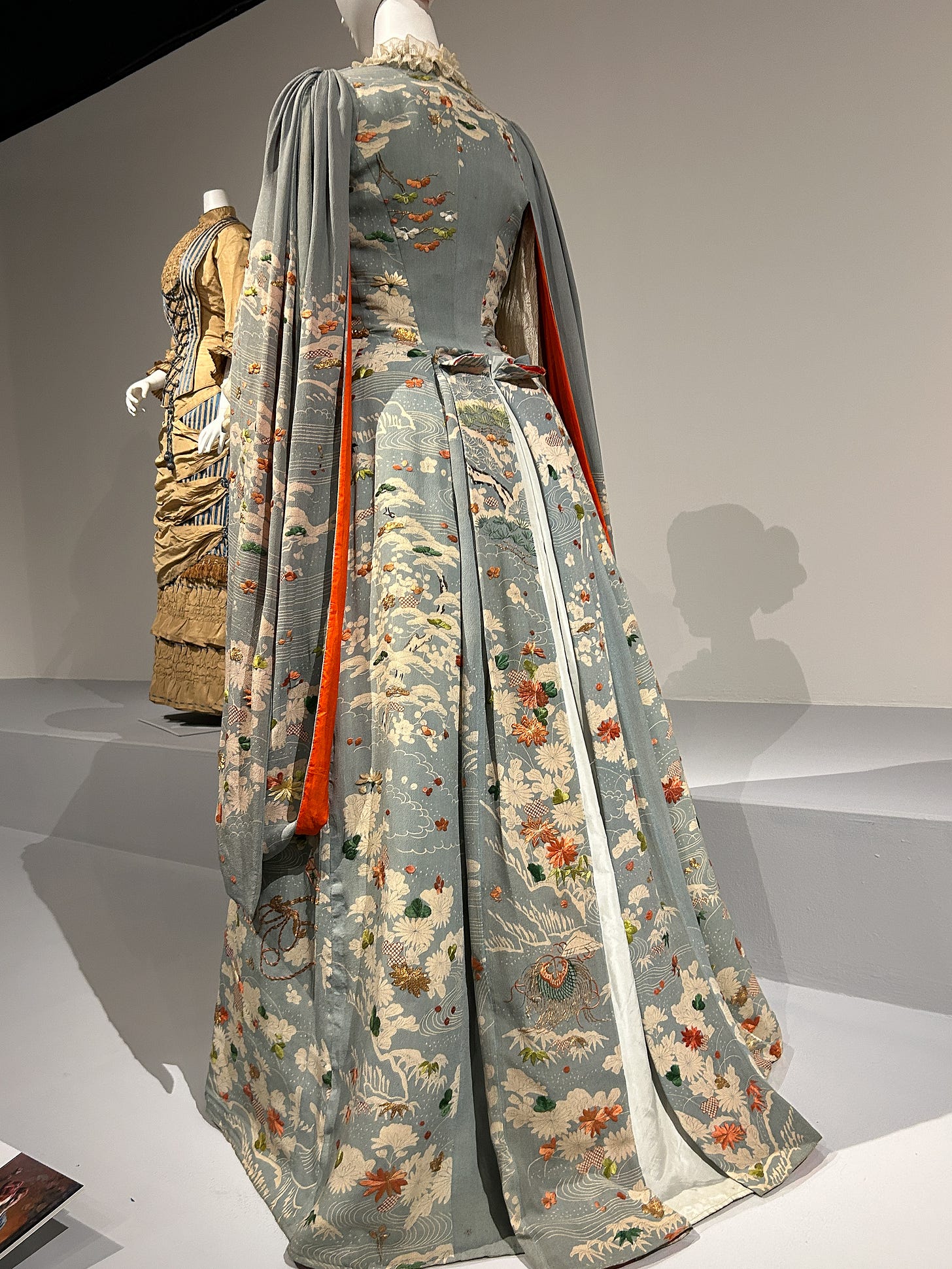
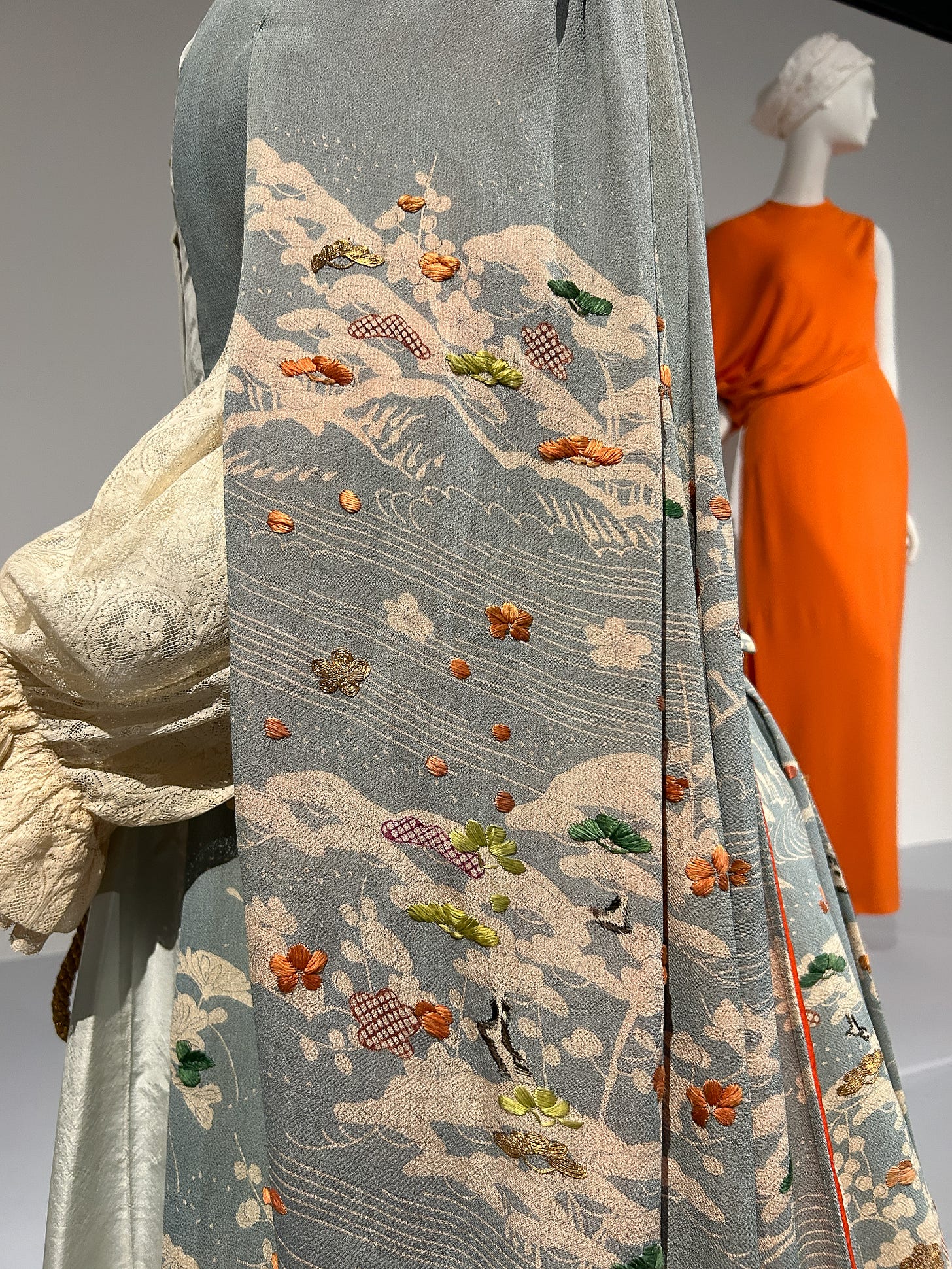

What a beautiful overview of embroidery, the tools and technique. Your own experience, Jane, gives depth to everything you post.